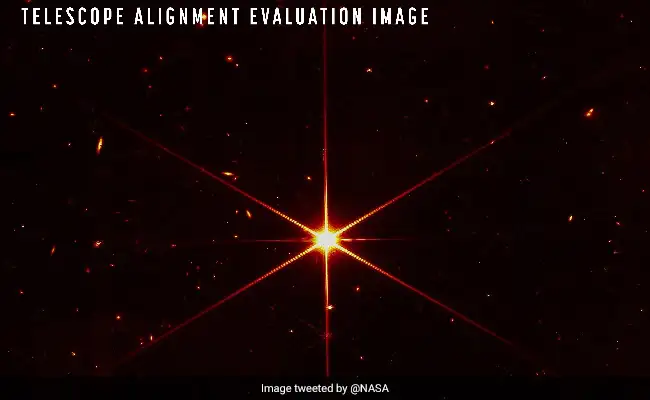
The James Webb Telescope has captured a stunning image of a billion-year-old cluster of galaxies.
The James Webb Telescope recently sent the first official deep space image to NASA officials, which explains why the $10 billion device is billed as the next big thing after Hubble. HD 84406 image was posted by NASA on its official Twitter account.
The stars line up…so to speak. ⭐
for us Tweet embed The team fully aligned the telescope’s primary imager with its mirrors, keeping its optics on track to meet or exceed scientific goals. Tune in at Noon EST (16:00 UTC) for an update: https://t.co/F638lywmKI#UnfoldTheUniversepic.twitter.com/FDTQVlNDUC
– NASA (@NASA) March 16, 2022
It was taken after completing a large alignment of its mirrors – called “accurate grading”. Explaining the process, NASA scientists said, they said it involved adjusting the incline and placement of 18 hexagonal mirrors, which requires nanometer-scale accuracy.
Now that a major step has been achieved, NASA will move to the next stage before the more complex and more expensive observatory is fully operational.
HD 84406, a star in the Milky Way, shows more than just a bright, bright focus in the image captured by the telescope. According to NASA, the star was chosen not of any scientific interest but solely because of its brightness and location.
What makes this image not only beautiful, but scientifically significant are the small spots that can be seen throughout the image, behind the amber colored stripes. Those little spots are actually very old galaxies. This is referred to as the “deep field”.
“This is going to be the future from now on. Wherever we look, it’s a deep field,” Jane Rigby, who works as an operations project scientist for the James Webb Space Telescope, said at a press conference. .”
The star is located 1.6 million kilometers from Earth.
Once all of the James Webb Telescope’s equipment is deployed, scientists expect that they will be able to see some of the first stars that appeared after the Big Bang.






